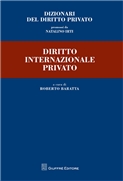In Canada, the test for taking jurisdiction over an out-of-province defendant requires that there be “a real and substantial connection” between the dispute and the forum. In 2002 the Court of Appeal for Ontario created a framework for analyzing a real and substantial connection, setting out, in Muscutt v. Courcelles, eight factors to consider. This framework became the standard in Ontario and was adopted by appellate courts in some other Canadian provinces. However, in 2009, in preparing to hear two appeals of decisions on motions challenging the court’s jurisdiction, the Court of Appeal for Ontario indicated that it was willing to consider whether any changes were required to the Muscutt framework. The two cases, consolidated on appeal as Van Breda v. Village Resorts Limited, 2010 ONCA 84 (available here), each concerned serious injuries that were suffered outside of Ontario.
Rule 17.02 of the Ontario Rules of Civil Procedure provides that a plaintiff may serve a defendant outside Ontario with an originating process in certain defined categories of cases. Prior to Morguard Investments Ltd. v. De Savoye, the analysis of jurisdiction centered on whether the plaintiff’s claim fell within one or more of the enumerated categories. However, Morguard established, and Muscutt confirmed, that rule 17.02 did not in itself create jurisdiction. Separate and apart from whether the claim fell inside the categories, the plaintiff had to establish that there was a real and substantial connection between the dispute and the forum.
In Van Breda the court made a significant change to the relationship between the categories in rule 17.02 and the real and substantial connection requirement. It has now held that if a case falls within the categories in rule 17.02, other than rules 17.02(h) and (o), a real and substantial connection with Ontario shall be presumed to exist. The central catalyst for this change is section 10 of the model Civil Jurisdiction and Proceedings Transfer Act. Section 3 of that statute provides in quite general terms that a court has jurisdiction when there is a real and substantial connection between the dispute and the forum. However, section 10 contains a list of specific situations in which a real and substantial connection is presumed to exist. Ontario has not adopted the CJPTA, but in Van Breda the court has adopted the CJPTA’s basic approach.
Even with this presumption, a framework for analyzing whether there is a real and substantial connection is still required in any case where a defendant seeks to refute the presumption, any case in which a plaintiff is relying on rule 17.02(h) or (o) so that no presumption arises, and any case in which a plaintiff does not rely on 17.02 at all and instead seeks leave of the court to serve a defendant outside Ontario under rule 17.03. Prior to Van Breda the courts used the Muscutt framework, which considered the following eight factors to determine whether there was a real and substantial connection to Ontario: (1) the connection between the forum and the plaintiff’s claim, (2) the connection between the forum and the defendant, (3) unfairness to the defendant in taking jurisdiction, (4) unfairness to the plaintiff in not taking jurisdiction, (5) the involvement of other parties, (6) the court’s willingness to enforce a foreign judgment rendered on the same jurisdictional basis, (7) whether the dispute is international or interprovincial, and (8) comity and the standards of jurisdiction used by other courts.
In Van Breda the court determined that it was necessary to “simplify the test and to provide for more clarity and ease in its application”. It held that “the core of the real and substantial connection test” is factors (1) and (2), and held that factors (3) to (8) will now “serve as analytic tools to assist the court in assessing the significance of the connections between the forum, the claim and the defendant”. The court affirms that factors (3) to (8) remain relevant to the issue of jurisdiction, but the court nevertheless reworks the framework, ostensibly so that no one factor from factors (3) to (8) could be analyzed separately from the other factors and could be independently determinative of the outcome. It is not clear that this change was necessary or that it makes the framework clearer and easier to apply.
For many, Van Breda violates the idiom “if it ain’t broke, don’t fix it”. The Muscutt framework was well-known and was working effectively. It was relatively easy to explain and to apply. In time we will know if as much can be said for the use of presumptions and the Van Breda framework, but for the moment there are questions about how the presumption will operate when challenged by a defendant and about the ongoing role of the factors the court now calls analytic tools.

